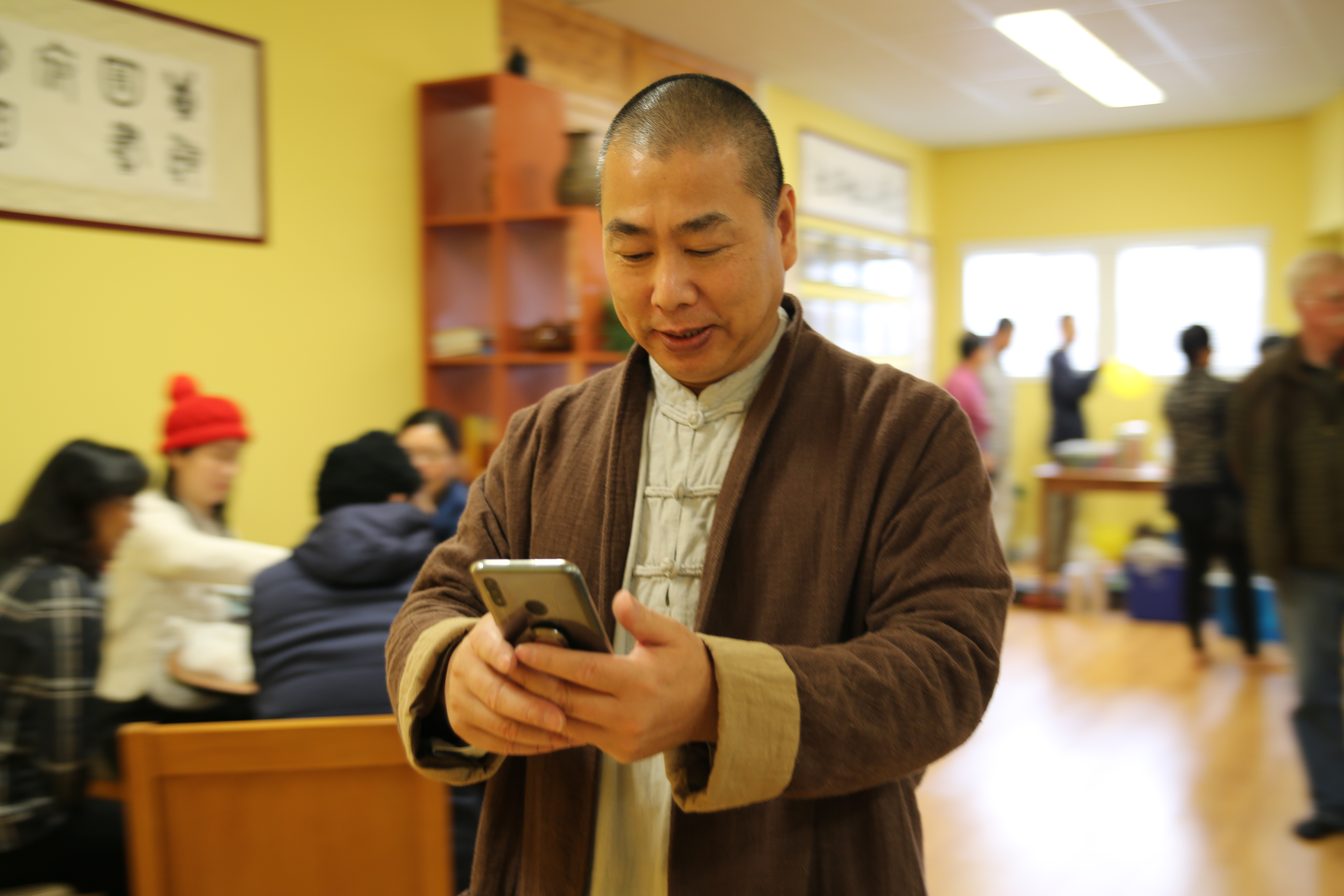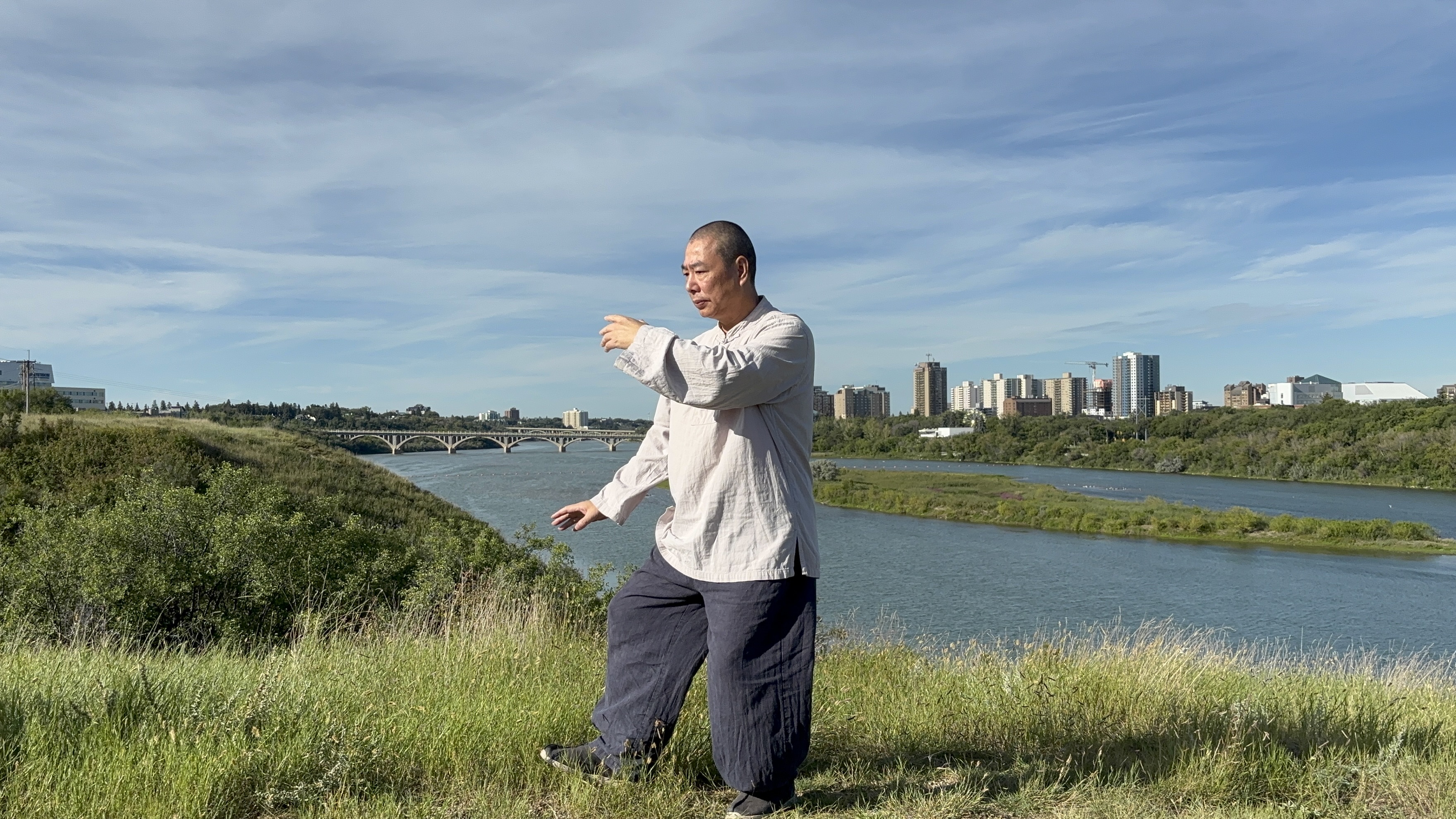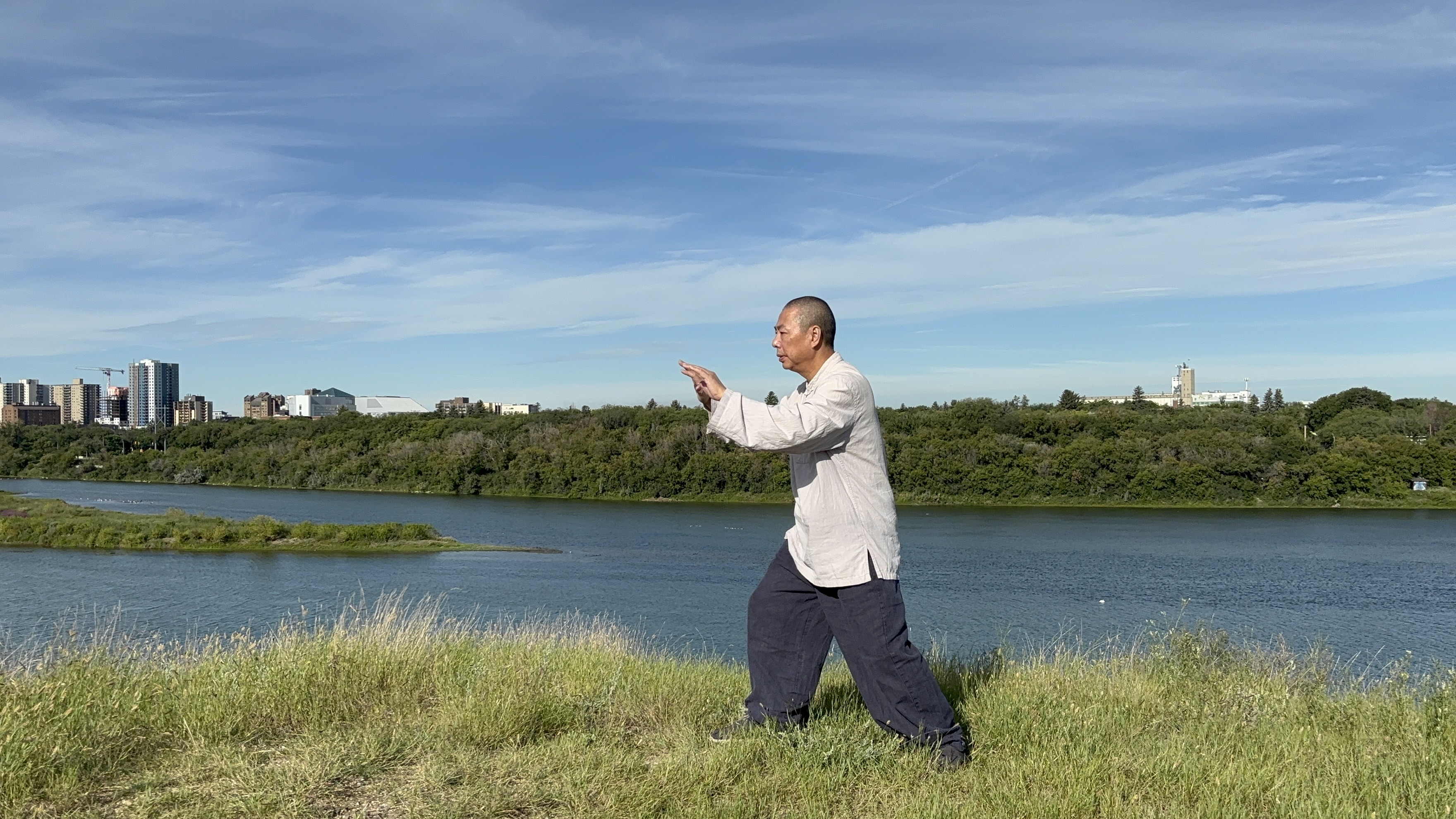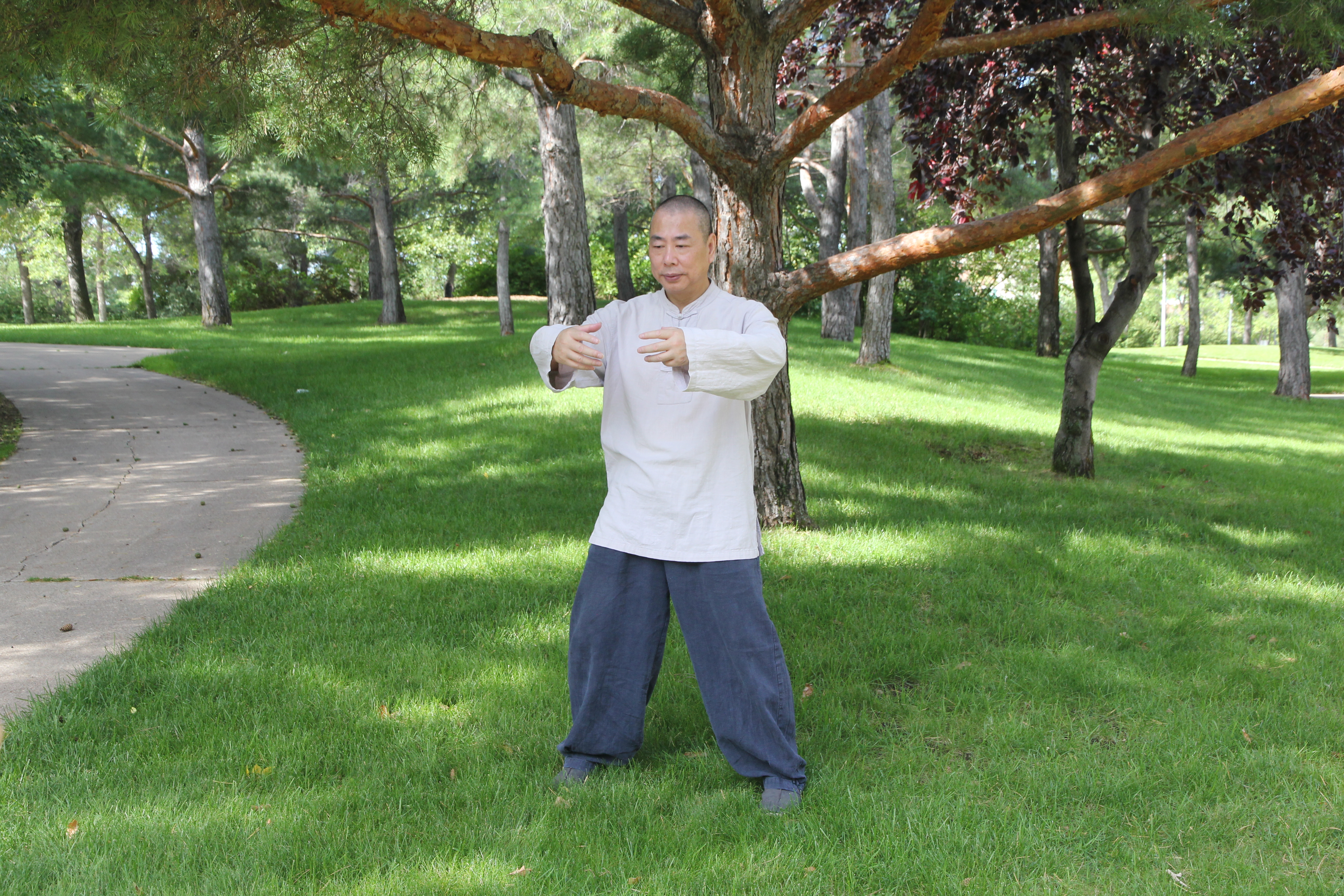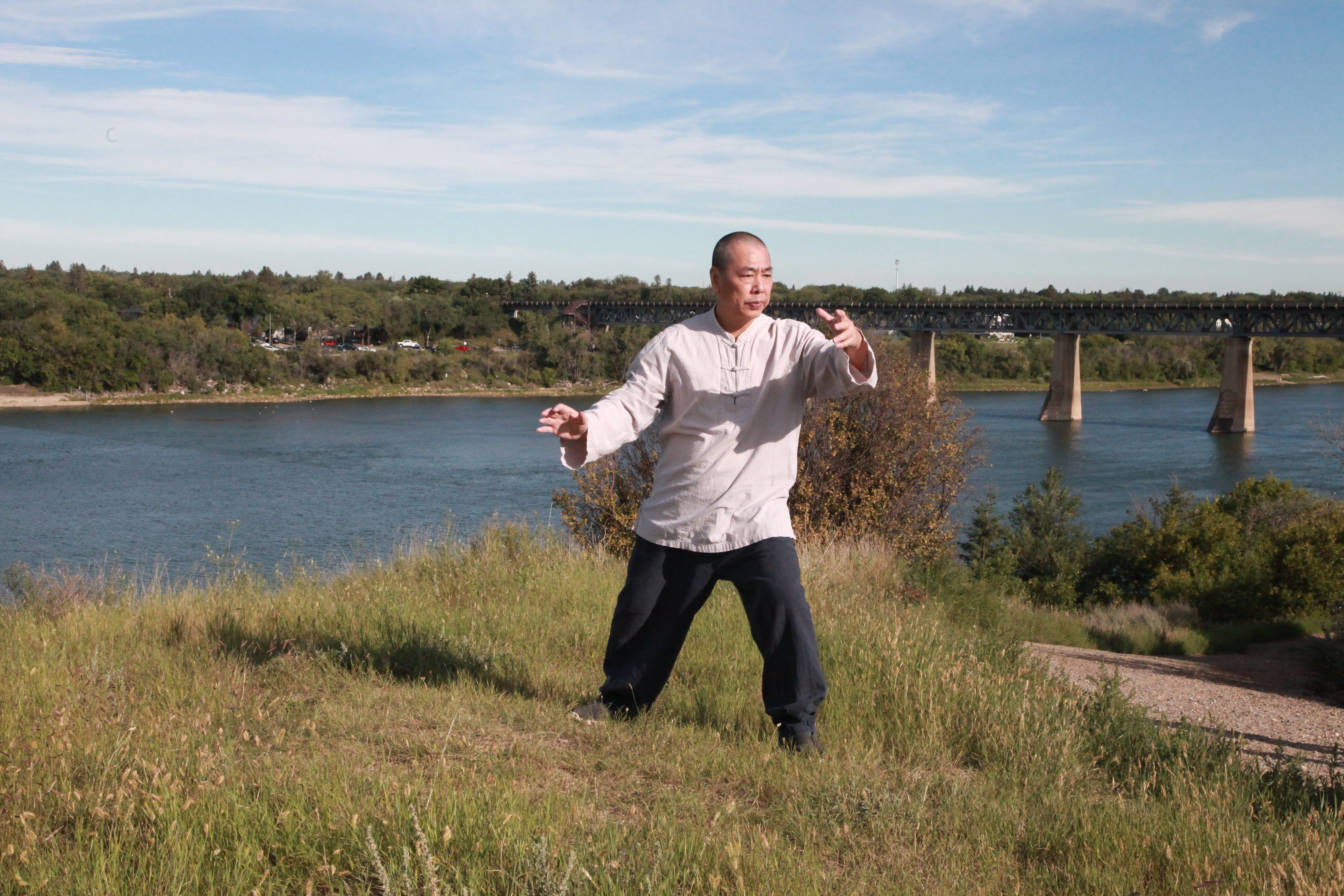太极拳:人间正道是减法
太极拳,作为中国传统文化的瑰宝,不仅是一门武术,更是一种生活的哲学。它以柔克刚、以静制动,蕴含着深刻的智慧。而"人间正道是减法"这一主题,正与太极拳的精髓不谋而合。太极拳的修炼过程,正是通过"减法"去除多余的杂念、动作与执着,回归自然、简朴与平衡。
一、太极拳的减法哲学
太极拳的核心在于"以无招胜有招",强调化繁为简。这种"减法"并非单纯的削减,而是剔除冗余,保留精华。拳式虽简,却蕴含无限变化;呼吸虽微,却贯通内外。修炼者需要摒弃多余的用力,放下浮躁与急切,才能追求身心的和谐统一。
初学时,人往往动作僵硬、急于求成。但随着练习深入,才会懂得"用意不用力",让动作自然圆融。减法意味着减少对抗、减少执念、减少对结果的焦虑。正如老子所言:"为学日益,为道日损。"太极拳的修炼,正是通过"日损",让身心回归纯粹。
二、减法之道与生活智慧
"人间正道是减法"不仅适用于太极拳,更是一种普世的人生哲学。在信息过载、物质堆积与精神焦虑的现代社会,减法为我们提供了一条返璞归真的路径。
1. 简化欲望,回归内心
太极讲究"心静",以缓慢的动作和深长的呼吸,安抚内心的波澜。现代人常被财富、名声与成就裹挟,然而真正的幸福往往来自心灵的平和。只有减少对外物的执着,才能听见内心真实的声音。
2. 减少对抗,化解冲突
太极以柔克刚,讲究"四两拨千斤"。生活中,我们常陷于争执与内耗。太极提醒我们顺势而为,以柔化刚,用包容化解矛盾。沟通时,若能放下争胜之心,倾听对方的诉求,往往更容易找到共赢之道。
3. 精简生活,专注当下
太极的每一招都要求专注当下。生活亦然——唯有学会"断舍离",减少不必要的物品、关系与目标,才能把精力投向真正重要之处。减少无意义的社交,专注与家人朋友的深度联结;减少琐碎的消耗,专注于自我的提升。
三、太极拳的减法实践
太极的"减法"不仅是哲理,更是实践。在动作、心态、社交与生活中,减法都展现着太极的精髓。
动作减:
太极的招式虽多,却都根植于最基本的圆与呼吸。初学者常迷恋复杂的手法,而真正的高手却能以简驭繁,用最朴素的动作传达最深的意境。"揽雀尾"看似只是推、按、挤、靠,却已囊括太极的核心。去除多余,保留纯粹,动作才会流畅而圆融。
心态减:
太极不仅训练身体,更磨炼心境。习拳之时,应当摒除杂念,放下对胜负的执着。站桩要静,推手要松,行拳要空。唯有心境澄明,方能融入呼吸与动作的律动。在生活中,这种减法让我们不为焦虑所扰,能够专注当下,从容应变。
社交减:
太极的爱好者因共同的兴趣而相聚,切磋交流,自然形成健康的社交圈。这样的交往远离无谓的应酬与浅薄的关系。孔子云:"益者三友,损者三友。"真正有价值的朋友,应当如太极同伴,彼此砥砺,互相滋养。社交的减少,不是孤立,而是让人保持清明与自在。
生活减:
太极的智慧同样延伸到日常生活。我们无需追逐过度的物质享受,更不必被极端强调肌肉与体能的健身理念所裹挟。练好太极拳,已足以涵养身心。读书学习亦然,不在多,而在于抓住根本。太极告诉我们:真正的学问是理论与实践的统一,掌握核心、运用得当,便可受益终身。
四、人间正道的启示
"人间正道是减法",不仅是太极的智慧,也是现代生活的指南。在节奏飞快、信息爆炸的时代,减法让我们重新审视生活的本质。真正的力量不在于占有多少,而在于舍弃多少;真正的智慧不在于知道多少,而在于放下多少。
太极教会我们,在喧嚣中寻得宁静,在复杂中追求简单。在练习中,我们学会减少外界的干扰,回归内心的平静;减少对抗的冲动,拥抱包容与和谐;减少无谓的追逐,珍惜当下的每一刻。
结语
太极拳不仅是身体的锻炼,更是心灵的修行。它以减法为道,引领我们在纷繁的尘世中找到一条正道。太极图中黑白相生相融,正如生活中加法与减法相辅相成。当我们学会以减法去除多余的负担,才能在加法中创造更有意义的人生。愿我们都能在太极的圆融之道中,找到属于自己的宁静与智慧,行走在人间正道。
总之,太极拳的"减法",并非失去,而是回归。去繁就简,存精去末——在动作中简练,在心境中澄明,在交往中纯粹,在生活中朴实。唯有如此,方能以最简单的方式,触及最深远的智慧。
现代人很难练太极内家拳,是真的吗?
一般人忙於生計,不是面臨滅頂之災,恐怕很少人會去練習真正的內功,也很少人登門求教。這個觀點確實反映了現代人對太極拳修煉的一些普遍看法,尤其是將太極拳視為一種耗時且需要長期投入的內功修煉,對於忙於生計的普通人來說,可能顯得遙不可及。然而,這個問題我将結合太極拳的本質、現代生活的現實以及修煉的實際意義,從多個角度來分析:
一、太極拳修煉是否真的"太費功夫"?
太極拳的修煉,特別是內功層面的修煉,確實需要時間和耐心。內功強調氣息調理、意念引導以及身心的深度協調,這與現代快節奏的生活方式形成了一定反差。然而,這種"費功夫"的觀念需要辯證看待:
1. 修煉的靈活性
太極拳並非要求每個人都達到武術高手的層次。對於普通人來說,太極拳可以作為一種健身、養生或調節心態的方式。每天30分鐘-1小时的簡單練習,如杨氏太极拳的基本功、松功和老架13式开始,就能顯著改善身心健康,緩解亚健康状况。這種"微型修煉"並不需要大量時間,舒緩放松,簡单易行,適合現代人的需求。
2. 長期收益 vs 短期投入
虽然太極拳的內功修煉需要長期積累,但其效果是漸進且深遠的。與其說"費功夫",不如說它是一種"慢工出細活"的過程。現代人常因壓力導致身心失調,太極拳通過放鬆身心、調節氣血,能有效緩解這些問題。相比於短期的健身潮流,太極拳的益處更持久,且能應對精神層面的挑戰。真正练习者越练越知其益处。
3. "費功夫"是誤解
很多人認為太極拳修煉必須追求高深的內功境界,這是一種誤解。太極拳的入門門檻其實很低,初學者可以從簡單的動作開始,逐步體會其精髓。真正的"功夫"不在於時間長短,而在於是否用心。即便每天只用短時間的練習,只要專注,也能感受到內在的變化。
二、現代人生計壓力與太極拳的契合
現代人忙於生計,時間和精力有限,這的確是修煉太極拳的一大挑戰。然而,太極拳的特性恰恰能與這種生活狀態形成互補:
1. 高效的時間利用
太極拳不需要特定的場地或器械,一塊小空地、甚至家中客廳都可以練習。對於忙碌的人來說,早上或晚上抽出短暫時間,就能達到放鬆和養生的效果。例如,簡單的"松功"練習或打个"左右仪"只需20-30分鐘,就能幫助緩解一天的疲勞,提升專注力。
2. 應對壓力的利器
現代人面臨的壓力往往來自工作、家庭和社交等多方面的"加法"。太極拳的"減法"哲學——減少雜念、減少對抗、減少執著——能幫助人們在壓力中找到平衡。通過緩慢的動作和呼吸調節,太極拳能降低皮質醇水平,改善焦慮和失眠,這對忙碌的人來說尤為珍貴。
3. "滅頂之災"前的預防
有人認為只有在危機時刻才會重視修煉,但太極拳的價值在於"防患於未然"。正如中醫強調"治未病",太極拳通過日常的調理,增強體質、提升心理韌性,能讓人在面對危機時更有應對能力。與其等到"滅頂之災",不如從小處著手,積少成多,符合现代预防医学原理。
三、為什麼很少人教授真正的內功?
關於"很少人教授真正的內功"的問題,這涉及到太極拳傳承的現狀以及現代社會的影響:
1. 傳承的斷層
傳統太極拳的內功修煉需要師徒之間的長期傳授,強調心法、意念和氣感的結合。然而,隨著現代化的衝擊,許多傳統武術的傳承受到挑戰。一些老師為了迎合市場需求,甚至爲了快點變現,因此簡化了教學內容,專注於動作的表面,讓人看著好看,又酷又炫,而忽略了內功的精髓。這導致"真正的內功"傳授變得稀缺,那麽很自然地,有深厚内功的老師越来越少。
2. 商業化與快餐文化的影響
現代社會追求快速成效,許多太極拳課程被改編成健身操或表演形式,失去了內功的深度。真正的內功修煉需要老師具備深厚的造詣,並願意花時間與學生分享,這在商業化的環境中難以實現。許多人只學到"形",而未觸及"意"與"氣"。
3. 學習者的心態
現代人學習太極拳,往往希望快速見效,或將其視為一種休閒活動,而非深入的修行。這種心態也影響了內功的傳授——因為內功需要學習者有耐心和恆心,這與快節奏的生活方式相悖。願意潛心修煉的學生減少,自然也減少了老師傳授內功的動力。
4. 傳統思想糟粕的影響
除上述原因外,部分传统观念中的保守思想,也无形中为内功传承设下了障碍。
在过去傳統的"师父带徒弟"的模式中,普遍存在着"留一手"的心态。一些传授者因受"教会徒弟,饿死师父"的观念束缚,在传授核心心法与内功时往往有所保留。这种源于生存焦虑的狭隘观念,导致了关键功法的传承断层。
结合前文所述,当下真正掌握内功的明师本就稀少,而内功修炼又极其依赖老师的"心传口授"与当面纠偏。若老师自身格局有限,在核心处吝于指点,学者即便外形模仿得再优美,也终是徒具其表,难以练就真正的内在功力。这正是传统糟粕对太极拳传承最深远的伤害。
四、如何讓太極拳的內功走進現代生活?
雖然修煉太極拳的內功有一定門檻,但並非完全不可及。以下是一些建議,讓普通人也能在忙碌生活中接觸太極拳的精髓:
1. 從簡單入手
無需追求高深的內功境界,初學者可以從站樁、松功、平游或簡單的太極拳套路開始,例如楊式太極拳的"起式"、"左右仪",都能幫助初學者體會氣感和身心的協調。
2. 尋找合適的師資
雖然真正的內功傳授較為稀缺,但仍有許多認真的太極拳老師在傳承傳統。通過線上平台、武術協會或口碑推薦,可以找到願意教授內功的老師。即便無法親自拜師,現代科技也提供了許多優質的基础線上課程,學習者可以從中汲取精華。
比如:Arise Core的王祖耀老師,杨氏太極第8代传人,在福建同安已培养出近十位太極高手;后移居加拿大萨省,最近三年时间培养出2位太極高手。其中部分高手弟子已有能力分別在中加兩地進行基礎教學,包括内功練習方法。
3. 融入日常,化繁為簡
太極拳的內功修煉並不一定要獨立於生活之外。例如,在工作中感到壓力時,可以通過深呼吸和簡單的太極動作(如"起式"、"平游")來調節情緒;在走路時,可以模仿太極拳的"鬆胯"步伐,體會身體的協調;在打毬時運用"轉胯"的技巧,效果絕對令人驚艷;開車累時,領會太極精髓,放鬆身體,再長的路也不怕。這種"生活處處是太極"的修煉精神,能讓我們的生活更有品質和樂趣。
五、結語
太極拳的修煉,特別是內功的修煉,的確需要時間和心力,但它並非高不可攀的"奢侈品"。對於忙於生計的現代人來說,太極拳的"減法"之道恰恰是一劑良藥,能幫助我們在繁忙中找到平衡,在壓力中尋求寧靜。雖然真正的內功傳授在現代社會中較為稀缺,但通過靈活的學習方式和正確的心態,普通人也能從太極拳中受益。只要用心,無論時間多寡,都能感受到這門古老智慧的魅力。
太極拳並非要求我們放棄生活,而是教我們如何更好地生活。正如"人間正道是減法",通過減少無謂的追逐和執著,我們才能在有限的時間裡,找到身心的和諧與力量。
Is It Really So Hard for Modern People to Practice Taiji Internal Martial Arts?
——Zuyao Wang
Every person is born with what can be called the "body of Tai Chi."
Here, "Tai Chi" does not simply mean a martial art form, but the very essence of life itself: clarity, wholeness, and the balance of yin and yang.
It exists in each of us, like a precious pearl covered in dust. There's no need to search outside—it's already within.
And yet, very few people ever truly touch it.
1. Human habit tends toward "addition."
Most people chase after skills, results, and stimulation. But Tai Chi is the art of "subtraction": letting go of desire, letting go of unnecessary force, letting go of restless thoughts. Because the direction runs opposite to what most people are used to, few are able to step in.
2. Society pushes in the opposite direction.
Today's culture prizes speed, competition, and efficiency. Tai Chi values slowness, stillness, and returning to one's source. Someone who sits quietly or practices standing meditation is often seen as "doing nothing." The environment itself makes perseverance difficult.
3. The self is too strong, blocking the essence.
Most of life revolves around the "I"—I like, I dislike, I want to succeed. This ego is like a thick fog covering the Tai Chi within. To touch the true essence, one must set aside the self, even if only for a while. For most people, that step feels nearly impossible.
4. Few real guides exist.
It's easy to learn a form for fitness, but genuine Tai Chi skill requires guidance from a true teacher and years of polishing the basics. Without authentic transmission and long-term practice, entry remains out of reach.
Even when someone accidentally touches a moment of inner stillness, to turn that spark into a stable way of being requires daily practice and discipline. Most people fall back before that point.
So yes—"everyone is born with the body of Tai Chi," but it is equally true that "very few ever touch it."
The pearl is already there, deep within body and mind. Yet layers of habit, desire, and social noise keep it hidden. With patience, right guidance, and the courage to return to one's source, anyone can rediscover the light of their original being.
人人皆有太极之体,为何很少人去触碰它?
——王祖耀
每個人都生而具足「太極之體」。所謂「太極」,不是一套拳架,而是生命的本源:清靜、圓滿、陰陽和合。它在每個人身上都存在,如寶珠蒙塵,並不需要外求。
然而,真能觸碰它的人極少。原因何在?
第一,人性慣性是「加法」。
習慣追逐技巧、成果、刺激,而太極偏偏是「減法」:去掉欲望、去掉多餘的力氣、去掉思維的喧囂。方向相反,多數人自然走不進去。
第二,社會氛圍不允許。
當今講的是快、競爭、效率,而太極講的是慢、寧靜、返本。一個人若靜坐、站樁,往往被認為「無所事事」,環境使人很難堅持。
第三,自我太強,遮蔽本體。
人的一生都在圍繞「我」打轉——我喜歡、我討厭、我要成功。這個「自我」如同迷霧,掩蓋了底層的太極。想觸及本體,就得暫時放下「我」,這一步對多數人來說幾乎不可能。
第四,少有正門引路。
有人認為只有在危機時刻才會重視修煉,但太極拳的價值在於"防患於未然"。正如中醫強調"治未病",太極拳通過日常的調理,增強體質、提升心理韌性,能讓人在面對危機時更有應對能力。與其等到"滅頂之災",不如從小處著手,積少成多,符合现代预防医学原理。
所以,「人人皆有太極之體」是真實存在的,但「很少人觸碰」也是現實。
寶珠就在身心深處,卻被習氣、欲望與社會喧囂層層遮蓋。若有恆心與明路,肯返本歸源,人人皆可再現本體光明。
Everyone Is Born With the Body of Tai Chi—So Why Do So Few Ever Touch It?
——Zuyao Wang
Every person is born with what can be called the "body of Tai Chi."
Here, "Tai Chi" does not simply mean a martial art form, but the very essence of life itself: clarity, wholeness, and the balance of yin and yang.
It exists in each of us, like a precious pearl covered in dust. There's no need to search outside—it's already within.
And yet, very few people ever truly touch it.
1. Human habit tends toward "addition."
Most people chase after skills, results, and stimulation. But Tai Chi is the art of "subtraction": letting go of desire, letting go of unnecessary force, letting go of restless thoughts. Because the direction runs opposite to what most people are used to, few are able to step in.
2. Society pushes in the opposite direction.
Today's culture prizes speed, competition, and efficiency. Tai Chi values slowness, stillness, and returning to one's source. Someone who sits quietly or practices standing meditation is often seen as "doing nothing." The environment itself makes perseverance difficult.
3. The self is too strong, blocking the essence.
Most of life revolves around the "I"—I like, I dislike, I want to succeed. This ego is like a thick fog covering the Tai Chi within. To touch the true essence, one must set aside the self, even if only for a while. For most people, that step feels nearly impossible.
4. Few real guides exist.
It's easy to learn a form for fitness, but genuine Tai Chi skill requires guidance from a true teacher and years of polishing the basics. Without authentic transmission and long-term practice, entry remains out of reach.
Even when someone accidentally touches a moment of inner stillness, to turn that spark into a stable way of being requires daily practice and discipline. Most people fall back before that point.
So yes—"everyone is born with the body of Tai Chi," but it is equally true that "very few ever touch it."
The pearl is already there, deep within body and mind. Yet layers of habit, desire, and social noise keep it hidden. With patience, right guidance, and the courage to return to one's source, anyone can rediscover the light of their original being.
Tai Chi: The Right Path of Subtraction
Tai Chi, as a treasure of Chinese traditional culture, is not only a martial art but also a philosophy of life. With its principles of overcoming hardness with softness and achieving motion through stillness, it embodies profound wisdom. The theme "The right path in life is subtraction" perfectly echoes the essence of Tai Chi. The process of practicing Tai Chi is one of subtraction—removing unnecessary distractions, movements, and attachments to return to a state of natural simplicity and balance.
1. The Philosophy of Subtraction in Tai Chi
The core of Tai Chi lies in "winning with no move," emphasizing the art of simplifying complexity. This subtraction is not mere reduction but the elimination of excess to preserve the essence. Tai Chi postures may seem simple, yet contain infinite variations; its breathing may appear subtle, yet connects body and spirit. Practitioners must abandon brute force and impatience, seeking harmony between body and mind.
At the beginning, learners often appear stiff and eager for results. As practice deepens, they learn to "use intention rather than strength," allowing movements to flow naturally. Subtraction here means less confrontation, fewer obsessions, and reduced anxiety about outcomes. As Laozi said, "In learning, one adds daily; in the Dao, one subtracts daily." The practice of Tai Chi is precisely this daily subtraction, guiding body and mind back to purity.
2. The Way of Subtraction and Life Wisdom
"Subtraction is the right path in life" is not only the wisdom of Tai Chi, but also a universal philosophy for living. In today's world of information overload, material accumulation, and mental stress, the Dao of subtraction offers us a way back to authenticity.
Simplify Desires, Return to the Heart
Tai Chi emphasizes calmness of mind. Through slow movements and deep breathing, it soothes inner turbulence. Modern people often chase wealth, fame, and achievements, yet true happiness comes from inner peace. By loosening our attachment to external things, we can hear the true voice of the heart.
Reduce Confrontation, Resolve Conflict
Tai Chi conquers hardness with softness, using "four ounces to move a thousand pounds." In life, we often fall into disputes and inner struggles. Tai Chi teaches us to follow the flow, reduce confrontation, and resolve conflict gently. In communication, letting go of the need to win and listening to others often leads to better solutions.
Simplify Life, Focus on the Present
Every Tai Chi movement requires full attention, for distraction breaks its rhythm. Likewise, life needs "decluttering." By reducing unnecessary possessions, relationships, and goals, we free energy for what truly matters. This may mean less meaningless socializing but deeper bonds with family and friends, or fewer distractions but more focus on self-cultivation.
3. Practicing Subtraction in Tai Chi
Subtraction in Tai Chi is not just philosophy—it is practice, applied in movement, mindset, social life, and daily living.
Movement Subtraction:
Though Tai Chi has many postures, all are rooted in the circle and the breath. Beginners often chase complexity, while masters achieve depth through simplicity. "Grasp the Bird's Tail" may appear to be just push, press, squeeze, and lean, but it embodies Tai Chi's essence. By removing excess, movements become clean, precise, and harmonious.
Mindset Subtraction:
Tai Chi trains both body and mind. Practitioners must clear away distractions and release attachment to winning or losing. To stand still, one must be calm; in push-hands, relaxed; in forms, empty. Only when the mind is unburdened can one sink into the rhythm of breath and motion. In life, this teaches us to let go of anxiety and face challenges with focus and composure.
Social Subtraction:
Those who practice Tai Chi often gather naturally through shared interest, forming a healthy social circle. Such connections are free from shallow obligations or superficial ties. As Confucius said, "There are three kinds of beneficial friends and three kinds of harmful friends." True friendships, like those among Tai Chi companions, are mutually supportive and nourishing. Reducing social distractions is not isolation, but clarity and genuine connection.
Life Subtraction:
The wisdom of Tai Chi extends into daily life. We need not pursue excessive material comforts, nor be swayed by fitness ideals that glorify extreme muscle and physical performance. Practicing Tai Chi alone can nurture body and mind. Likewise, learning is not about reading countless books, but about grasping essentials. True knowledge lies in uniting theory and practice—mastering the core and applying it well can benefit us for a lifetime.
Summary:
The subtraction of Tai Chi is not about losing but about returning. By stripping away the unnecessary, we preserve the essential—simplicity in movement, clarity in mind, authenticity in relationships, and modesty in life. In this way, the simplest practice leads to the deepest wisdom.
4. The Inspiration of the Right Path
"The right path in life is subtraction" is not only Tai Chi's wisdom, but also a guide for modern living. In an age of noise and speed, subtraction helps us re-examine what truly matters. True strength lies not in how much we possess, but in how much we can let go. True wisdom lies not in how much we know, but in how much we release.
Tai Chi shows us how to find stillness amid chaos, and simplicity amid complexity. In practice, we learn to reduce distractions, return to inner calm; to reduce confrontation, embrace harmony; to reduce meaningless pursuits, and treasure the present moment.
Conclusion
Tai Chi is not merely physical training—it is also spiritual cultivation. It follows the Dao of subtraction, guiding us to find the right path in life. Just as the yin and yang of the Tai Chi diagram blend into one, so too must addition and subtraction in life complement each other. When we learn to remove unnecessary burdens through subtraction, we can add true meaning to our lives. In the circle of Tai Chi, may we all find peace, wisdom, and the right path for our journey.

